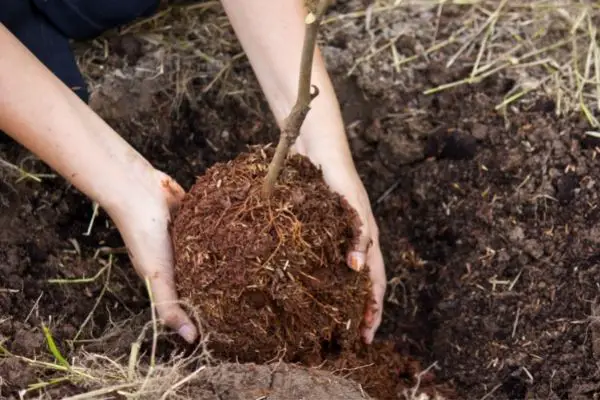What’s the Number of Trees to Offset Carbon Footprint (+ Exact Formula!)
In theory, undoing the damage done by greenhouse emissions is easy.
All you have to do is plant a certain number of trees. If every single person does this, the earth’s ecosystem will stand a chance.
So, how many trees do we need to offset our carbon footprint here and now?
Not so fast! The number depends on the amount of carbon dioxide that’s around today, but also the predicted future emissions from one city, country, or continent.
We’ll take a look at all this in detail below.
But first…
Why Are Trees Special in This Fight?
Trees are the ultimate long-term solution to this problem because they’re almost made up almost entirely of carbon.
What’s more, they mainly get their water from underground, don’t destroy the topsoil, and they get their total mass from the air they take in.
This means that the total amount of carbon atoms a tree absorbs in its lifetime is about the same as its total mass.
It makes sense why trees are so important in the fight against rising CO2 levels, right?
How Much Carbon Dioxide Can a Single Tree Absorb?

The amount of carbon dioxide that a single tree absorbs mainly depends on its size. Younger trees naturally absorb less CO2 than fully grown ones.
Typically, one grown tree absorbs around 50 pounds (22 kgs) of carbon dioxide in a year for about 40 – 50 years. That means that a single tree may absorb about 1 ton of carbon dioxide over its lifetime!
However, this assumption is only ideal and not realistic. That’s because there are other factors in the environment that we haven’t put into consideration.
The most common is the competition of resources that happens all the time in the wild. That’s why you’ll find that some trees won’t make it to maturity and achieve these numbers as they’ll either die or be destroyed by stronger or better advantaged trees.
How to Calculate Carbon Offset Using Trees
To put it simply, carbon offsets are actions that can help neutralize the world’s enormous carbon emissions.
To figure out the total amount of carbon emission, we first need to sum up the CO2 given out through our daily human activities like transport, manufacturing, cooking, charging your devices, and others to give us a solid estimate.
Now, given that a mature tree averagely weighs about 2 tons, it means that one tree can remove 7 tons of CO2 from the atmosphere. (This average assumption is also based on the fact that not all trees will reach maturity.)
How did we get to this figure?
As you know, trees use up a lot of CO2 during photosynthesis and give off oxygen as a by-product. So, to get the total amount of carbon offset from a single tree, we just need to subtract the oxygen from the total weight of the CO2 atoms of every tree. Basically, a 2-ton tree will expel around 7 tons of CO2 from this principle.
Here’s how:
2 tons ÷ (12/44) = 7.33
In this calculation, (12/44) is the relative weight of one carbon atom in every CO2 molecule.
So the formula is:
Weight of tree ÷ (12/44) = the amount of total carbon offset over the tree’s lifetime
A recent study suggested that a typical US home releases a 48 metric ton carbon footprint. With this figure, it means that one household has to plant at least 6 – 7 trees to compensate in the end.
Note:The figures are only based on individual household emissions like electricity consumption, cooking, and the like. It does not take into account the occupants’ other carbon emissions from their day-to-day activities.
High carbon-producing cities like Beijing will need to plant about 15 million+ trees to offset their emission. Reykjavik, one of the least carbon-emitting capitals found in Iceland, needs to plant 69,000+ trees to offset its output of 346,630 tCO2 every year.
Is That Enough?

Sadly – no.
While planting trees has been voted as the best method to sequester carbon presence on the planet, it will take quite a long time before we actively begin to feel its impact.
“Why,” you’ll ask.
Well, as you know, trees take time to grow from tiny saplings into fully mature ones. All factors held constant, it will take a tree about 10 – 20 years before it’s able to make any considerable impact to the carbon problem.
In the climate summit held in Glasgow in 2021, the United Nations once again posited that the world needs to reduce its carbon emissions by 45% by 2030 and realize climate neutrality by the year 2050. This, they said, was if we wanted to tame global warming and keep its increment “well below” 2 degrees Celsius by the end of this century.
Frequently Asked Questions
What is the cause of the largest carbon footprint?
The biggest contributor to the rising carbon footprint is fossil fuels.
Burning fossil fuels to get heat, electricity, and propel transport continues to increase the level of CO2 in our atmosphere. Switching to renewable power sources and cutting the number of times you drive go a long way in eliminating carbon emissions.
Can you really offset your carbon footprint?
Every person can offset their carbon footprint.
YFor status, you can do it by reducing the amount of meat you consume, switching to cleaner energy, re-using plastics, and driving less. Planting trees will also help in the longer run!
How many trees does it take to compensate CO2?
The number of trees needed to offset CO2 depends on a few factors.
You first have to determine how much carbon yourself, your household, city, or country produces. An adult tree weighing 2 tons will neutralize around 7 tons of carbon over its life cycle. So, divide the total amount of carbon you want to offset by 7, and you’ll get the average number of trees you need to plant.






